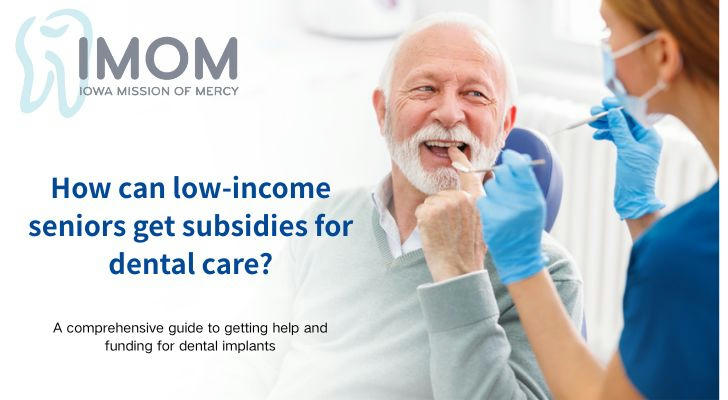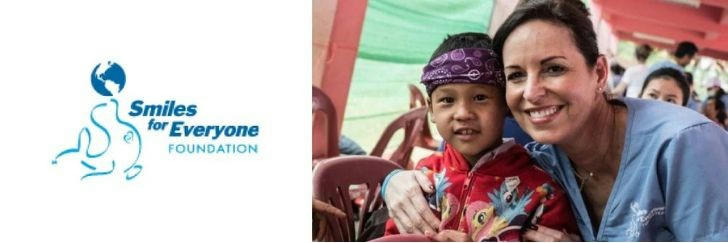Dental Assistance Programs in the U.S. – 2025 Guide
🦷All age / Low-Income / Dental Implant Subsidy and Assistance
Dental care in the U.S., and especially dental implants, can be very expensive. For people over 45, older adults, or those with low incomes, achieving a healthy smile often represents a significant financial burden.This article describes government-funded and philanthropic programs across the United States. It can help you find grants, programs, and alternatives that can reduce or eliminate costs for both adults and children..

🏥 Dental care options for low-income and elderly people in the United States
1. Charities and Programs
Mission of Mercy (MOM) → Mobile clinics in 18 states, some for implants.
Dental Lifeline Network (DDS) → Bear the cost burden for seniors, the disabled, and the seriously ill.
Smiles for Everyone Foundation → Community clinics with treatment.
Give Back a Smile → Support for victims of domestic violence.
NAFC (National Association & Charitable Clinics) → A nationwide network of low-cost clinics searchable by zip code, eliminating the need to worry about costs.
👉 Ideal option for seniors and families with limited income.
2. Community Clinics and Dental Schools
FQHCs (Federally Qualified Health Centers) → Income-adjusted costs; some offer prosthetics or implants.
Dental Schools → Treatments up to 50% cheaper, supervised by board-certified dentists.
3. Government Programs: Medicaid & Medicare
Medicaid → Covers basic services; some states approve implants in medically necessary cases.
Original Medicare (A and B) → Does not cover implants.
Medicare Advantage (Part C) → Some private plans include partial coverage for implants.
4. Private Dental Insurance and Financing
Premium plans → may cover part of the cost of implants.
CareCredit / LendingClub → Installment payments, sometimes interest-free.
Dental Discount Plans → Discounted memberships at private clinics.
5. Additional Alternatives
Crowdfunding → GoFundMe and other fundraising platforms.
Dental Tourism → Mexico or Puerto Rico, with costs up to 70% lower than in the US.
📋 Common eligibility requirements
Proof of income (pay stubs, taxes)
Residency in the service area (bill or local ID)
Medical conditions (e.g., seniors, disabled)
Pre-screening and resource availability
Possible waiting list (especially for implants)
✅ Who can receive help?
People with low income or without dental insurance
Older adults with limited income
Patients with disabilities or chronic illnesses
Victims of domestic violence (special programs)
Families who cannot afford private treatment

👥 Who Benefits Most from These Dental Assistance Programs?
Different age groups face unique dental needs. These programs are designed to make essential and advanced care accessible across all life stages:
0–25 years old
Pediatric checkups, cavity prevention, fluoride treatments, and orthodontic evaluations.
Many charity-funded programs cover preventive care for children and young adults, ensuring healthy development.
25–45 years old
Support for fillings, root canals, extractions, and gum disease treatments.
Beneficial for young adults without insurance or those starting families who need low-cost basic and restorative care.
45–65 years old
Periodontal care, crowns, dentures, and sometimes implants.
Programs help reduce the cost burden during midlife, when dental expenses tend to rise and insurance coverage may be limited.
Ideal for those exploring Dental Implants for 45+ and Dental Implants for 55+ at reduced or subsidized rates.
65+ years old
- Seniors often benefit the most: dentures, implants, and treatment for chronic oral conditions are sometimes covered by senior-focused programs like Dental Lifeline Network.
Many community clinics prioritize this group, making them strong candidates for Dental Implants for Seniors Over 60.
💡 Tips for Maximizing Your Chances of Receiving Implant Financial Assistance
Do your research——Each program has its own eligibility requirements. Before applying, make sure you meet the relevant criteria.
Complete documentation——Prepare all possible paperwork in advance, such as proof of income, medical diagnosis, and recommendation letters.
Talk to your dentist——Many dentists are aware of financing options and grant programs that can significantly reduce implant costs.
❓ Frequently Asked Questions (FAQ)
☑ Who can access these dental assistance programs?
They are designed for individuals with low income, no insurance, or medical conditions that make dental care unaffordable. Seniors, people with disabilities, and children are often prioritized.
☑ How long will I wait for treatment?
Basic services usually have shorter waiting times, while implants or advanced procedures may involve waiting several months.
☑ Will I need to pay anything in a community clinic or dental school?
In many cases, there is no extra cost to the patient, though some clinics charge reduced fees to cover materials.
☑ Is treatment in dental schools high quality?
Yes. Students perform procedures under the direct supervision of certified dentists, ensuring safe and effective care.
☑ How can I find a community clinic or charity program near me?
Use resources like the National Association & Charitable Clinics (NAFC) website or the HRSA health center locator.
Disclaimer:This guide is intended for informational purposes only and should not be considered medical or dental advice. Availability of financial assistance programs, coverage for Dental Implants for Seniors Over 60, or Dental Implants for 55+ varies by state, clinic, and insurance provider. For accurate eligibility details and personalized recommendations, always consult directly with licensed dentists, community clinics, or official health agencies.
